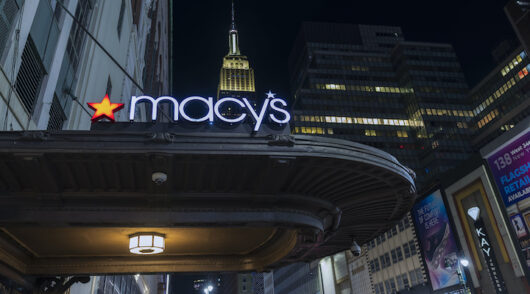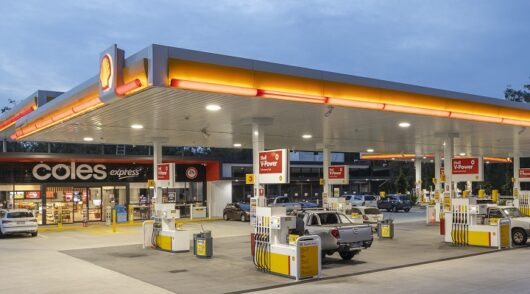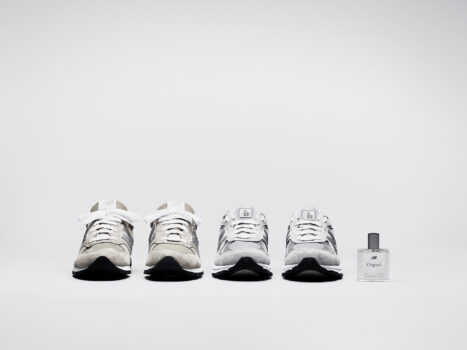 Some of Australia’s biggest retail brands are fighting for survival under siege from online and bricks-and-mortar international entrants to the Australian market but also in a do-or-die contest between themselves.
Some of Australia’s biggest retail brands are fighting for survival under siege from online and bricks-and-mortar international entrants to the Australian market but also in a do-or-die contest between themselves.
Whether Myer, David Jones, Kmart, Target, Big W and Harris Scarfe can all survive is debatable but if they are to do so, at least four of them will need to reconfigure their businesses.
Of the six retail chains, only Kmart and David Jones look relatively secure in the contemporary retail marketplace.
The financial results for each of the chains for the 2017 financial year confirm the struggle for sales, market share and earnings growth in the short term, but also indicate that their business models are under threat.
The two chains at most risk are Big W and Target, both of which have been in the throes of turnaround plans for several years.
Big W recorded a massive $150.5 million loss before interest and tax, compared with a $14.9 million loss in FY16.
Woolworths has indicated that the FY17 loss effectively cleared the decks in respect to writedowns, including a $35.5 million provision for what Woolworths described as “onerous leases”.
The latest loss is serious enough but more alarming is the fact that Big W’s sales continue to plummet.
In FY17, Big W sales fell by 5.8 per cent to $3.6 billion when the retailer conceded that price inflation over the 12 months was around five per cent.
Comparable sales across the store network were down 5.7 per cent, which Woolworths explained was a continuation of a “multi year decline in transaction count and deflation, largely driven by clearance and discounting.
Clearance and discounting translates to the wrong merchandise range and the decline in transaction count is code for lower customer numbers traipsing through stores.
Woolworths claims a “significant body of work was undertaken” in FY17 to build out a turnaround plan to stabilise and improve the business.
“We put the customer back at the heart of Big W by developing a strategy focused on rebuilding customer trust on price and deliver the right product solutions, while enhancing customers’ shopping experience in store and online.”
Woolworths shareholders have been told Big W has “started to make a number of changes across the business to rebuild team morale and capability and create a strong platform to re-establish the chain’s price credentials”.
That statement begs the question: What was being done earlier in the turnaround plans, if Big W is only now “starting” to make changes in a business that is bleeding badly and apparently losing relevance with Australian shoppers?
Target
Target is facing the same challenge for survival as Big W with the Wesfarmers discount department store chain shedding 14.6 per cent from its annual revenues in FY17.
For the first time in many years, Target’s annual sales fell below $3 billion as revenues plunged from $3.46 billion in FY16 to $2.95 billion in the latest year.
Just like Big W, Target’s comparable sales provide a red flag for the business with a 14.9 per cent.
Target posted a $10 million loss in earnings before interest and tax for the 12 months ended June 2017, compared with a $195 million loss the previous year, when Wesfarmers sought to clear the decks with significant writedowns.
Target indicated the provisions in FY16 had underpinned an improvement in the business and that the latest result was impacted by a further $53 million in restructuring costs.
The dramatic sales fall was attributed to “decisive actions” taken to transform the business including reduced pricing, a reset of merchandise disciplines that affected levels of summer stock and fashionability and the deletion of loss making products and unprofitable events.
Target opened one new store in the latest financial year but closed four stores.
The chain actually plans to open five new stores in the near future, but inevitably, the heavy fall in sales across many existing locations will prompt a review of their value to Target and could result in closures or conversions to Kmart.
Guy Russo, who succeeded in turning around the flagging Kmart chain, is currently implementing renewal and floorspace and range trials in a bid to restore sales momentum and productivity.
Russo is steering the Target turnaround plan and other key priorities of the blueprint are on improving fashionability and quality of sales.
The turnaround task at Target is more challenging than the Kmart revival because of changes in the Australian retail marketplace, that include the pending Amazon entry and the bricks-and-mortar store openings of global retailers such as Costco, TK Maxx, Debenhams, H&M and Zara.
Arguably, the competition for consumer spending and, importantly, loyalty, has never been so fierce for the discount department sector.
The competition extends to a repositioning of Myer, Harris Scarfe and Best & Less in the fashion and homewares categories, as well as other national chains, such as Harvey Norman, JB Hi-Fi, Bunnings, the Good Guys and Adairs.
Harvey Norman, JB Hi-Fi, Bunnings and Adairs have all posted solid results in FY17 in contrast to all but Kmart in the department store sector.
Kmart lifted sales in FY17 by a healthy 7.5 per cent to $5.58 billion with like-for-like sales growth of 4.2 per cent.
The chain lifted earnings before interest and tax by 17.7 per cent to $553 million.
Kmart’s growth indicates market share gains at the expense of Target and Big W, as well as other chains in the department store category and Russo is capitalising on customer gains with 11 new stores added in the past year, along with 33 major refurbishments.
While Kmart is expanding, the full line Myer department store chain is continuing to contract and showing little evidence of gains from its ongoing turnaround plan.
For the full 2017 financial year, Myer sales declined 1.4 per cent to $3.2 billion with comparable sales down 0.2 per cent In fact and a 0.5 per cent fall in sales per square.
Myer reported an underlying $67.9 million trading profit for FY17, down from the previous year’s $69.4 million, however, the bottom line result was actually an $11.9m profit after further writedowns in the accounts.
Myer has shed trimmed a total of 74,670 sqm of retail floorspace since September 2015 in its bid for a sustainable store network and has allocated 20,000 sqm across 8 stores to dedicated clearance floors in a bid to boost customer traffic levels and sales.
David Jones was not immune to the flagging sales across most of the department store sector in the year to June 2017, reporting subdued growth compared with the initial results generated under the ownership of the South African retailer, Woolworths Holdings.
David Jones recorded a one per cent increase in sales to $2.21 billion for FY17, but comparable sales were in negative territory by 0.7 per cent.
David Jones profit fell by 25.3 per cent to $127 million for the year.
The department store chain reported lower customer traffic levels in stores but that market share had increased. The second half of the financial year was largely to blame for the sluggish sales growth.
David Jones is investing $100 million over three years to develop its food offer as a key differentiator to Myer and as a traffic generator in stores.
While David Jones backs food for growth and Myer hopes an alliance with British retailer John Lewis will boost its performance, Harris Scarfe is hoping a tie-in with UK retailer, Debenhams, will return the Steinhoff International owned chain to profitability and secure its future.





